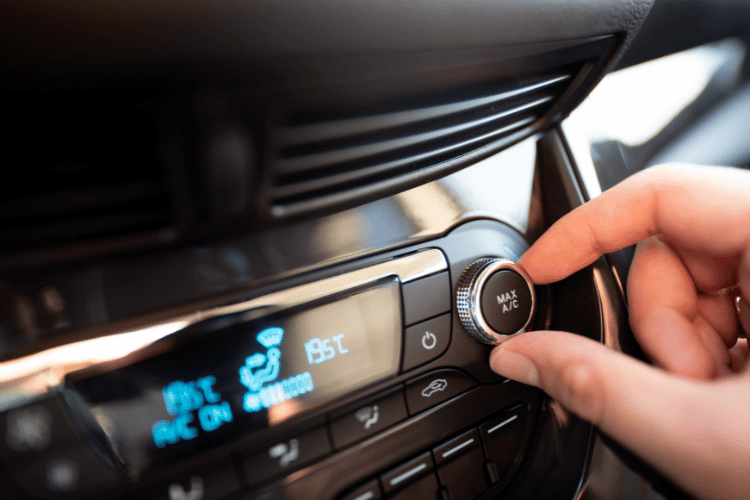The 2012 Jeep Liberty, equipped with a robust 3.7 V6 engine, is a vehicle designed for performance and reliability. One key element to keep this engine running smoothly is understanding its firing order.
In this guide, we’ll delve into the significance of the firing order, which dictates the sequence in which the engine’s cylinders ignite.
Knowing this order is essential for maintaining optimal engine performance and detecting any possible issues with the ignition.
What Is the 2012 Jeep Liberty 3.7 Firing Order?

The firing order for a 2012 Jeep Liberty 3.7L engine is 1-6-5-4-3-2. This means that the spark plugs fire in the following sequence: cylinder 1, cylinder 6, cylinder 5, cylinder 4, cylinder 3, and cylinder 2.
The firing order is the precise sequence in which a vehicle’s engine ignites the air-fuel mixture in each cylinder. This sequence is vital to ensure that the engine operates smoothly, generates power, and maintains fuel efficiency.
Understanding this sequence is vital for maintaining the engine’s performance. The firing order is important for ensuring that the engine runs smoothly and efficiently. If the firing order is incorrect, it can cause a misfire, which can lead to engine damage.
Here are some of the symptoms of a misfire:
- Rough idle
- Loss of power
- Increased emissions
- Check engine light
If you are experiencing any of these symptoms, it is important to have your Jeep Liberty inspected by a qualified mechanic.
Exploring Firing Order and Ignition System
For correctly maintaining the 2012 Jeep Liberty’s engine, it’s crucial to consider the ignition system’s components.
The ignition system of the 2012 Jeep Liberty 3.7L V6 engine consists of the following components:
- Battery: The battery is the power source for the ignition system. It stores electrical energy that is used to start the engine and power other electrical components.
- Starter motor: The starter motor is a powerful electric motor that is used to crank the engine when the key is turned to the “start” position.
- Ignition switch: The ignition switch is the switch that turns on the electrical system when the key is inserted.
- Ignition coil: The ignition coil is a transformer that steps up the voltage from the battery to the spark plugs.
- Spark plugs: The spark plugs are the components that ignite the air-fuel mixture in the cylinders.
- Spark plug wires: The spark plug wires carry the high-voltage electricity from the ignition coil to the spark plugs.
- Crankcase position sensor: The crankcase position sensor (CKP) detects the position of the crankshaft and sends this information to the engine control module (ECM).
- Camshaft position sensor: The camshaft position sensor (CMP) detects the position of the camshaft and sends this information to the ECM.
- Engine control module (ECM): The ECM is the “brain” of the ignition system. It receives signals from the CKP, CMP, and other sensors, and uses this information to control the timing of the spark plugs and other ignition system components.
How the Firing Order Works
Here is a detailed explanation of how the firing order works:
- The intake stroke: As the piston in cylinder 1 moves down, it creates a vacuum in the cylinder. This vacuum draws in a mixture of air and fuel from the intake manifold.
- The compression stroke: As the piston moves back up the cylinder, it compresses the air-fuel mixture. This compression increases the temperature and pressure of the mixture.
- The combustion stroke: At the top of the compression stroke, the spark plug in cylinder 1 fires, igniting the air-fuel mixture. This combustion creates a rapid expansion of gasses, which forces the piston back down the cylinder.
- The exhaust stroke: As the piston moves back down the cylinder, it opens the exhaust valve, allowing the spent gasses from the combustion stroke to escape out of the exhaust manifold.
- This cycle is repeated for each cylinder in the engine, following the firing order 1-6-5-4-3-2. The firing order ensures that the combustion strokes in each cylinder are evenly spaced, which helps to create a smooth and efficient running engine.

How the Misfire Occurs
A misfire occurs when the air-fuel mixture in one or more cylinders does not ignite properly. This can be caused by a variety of factors, such as a faulty spark plug, a damaged spark plug wire, or a problem with the ignition coil.
Misfires can cause the engine to run rough, lose power, and produce excessive emissions.
Troubleshooting Firing Order Problems
If you are experiencing problems with your Jeep Liberty’s engine, such as rough running, loss of power, or increased emissions, it is possible that there is a problem with the firing order.
To troubleshoot firing order problems, you can use a spark plug tester to check if the spark plugs are firing in the correct order.
If you are not comfortable troubleshooting firing order problems yourself, you should take your Jeep Liberty to a qualified mechanic.
Conclusion
In conclusion, understanding the firing order of the 2012 Jeep Liberty 3.7 V6 engine is fundamental for maintaining optimal engine performance.
Many components work together to start up your vehicle, and knowing the firing order will help you check the components in the proper order which, if you know your way around engines, can help you pinpoint the problem.
If not, a mechanic should be more than capable of finding the issue.
Read more: Ford 302 & 302 HO Engine Firing Order
